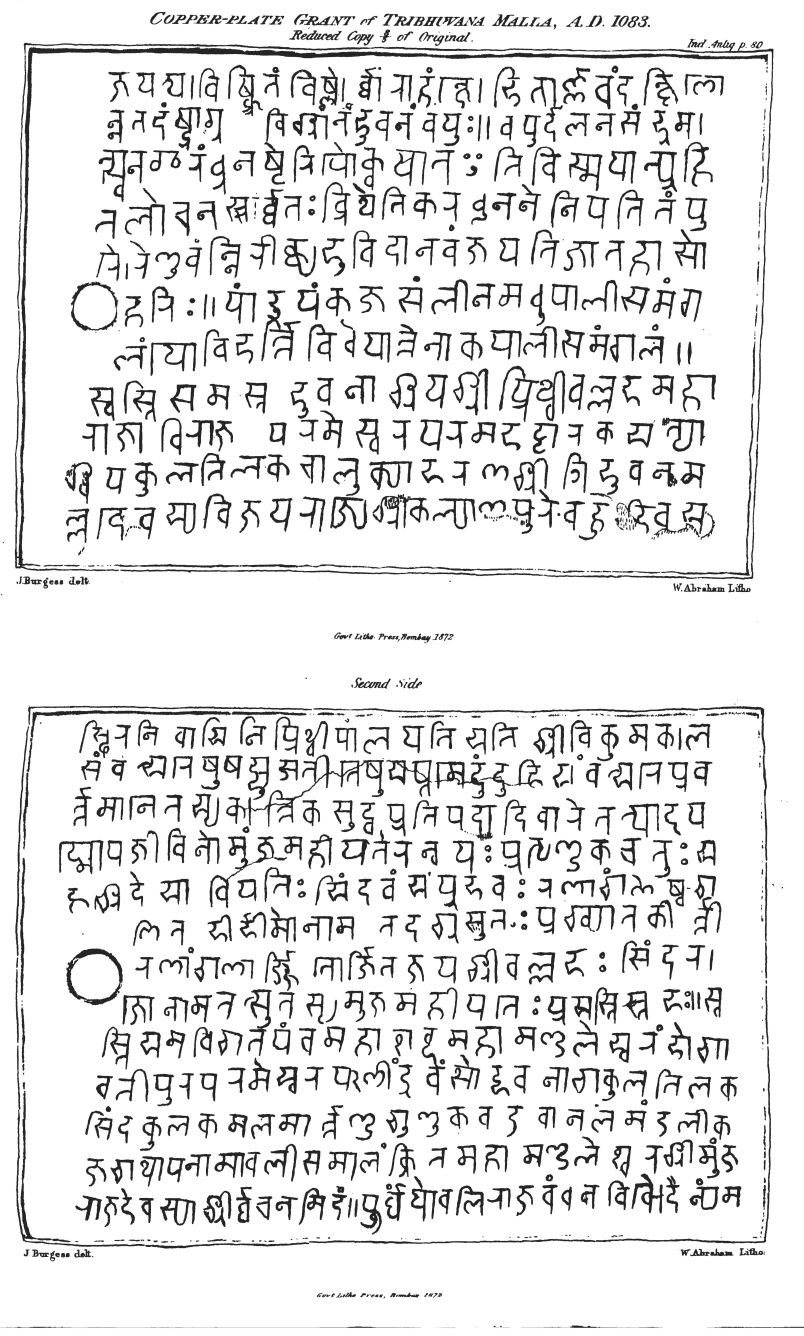|
Bhāruci
Bhāruci's commentary ( bhashya) on the Manu Smrti, or Laws of Manu, is part of the corpus of Dharmaśāstra texts available to us today. It is the oldest commentary on Manu that we know of, and is one of the sources used by Medhātithi, another major commentator on the Manu Smṛti. Dating and historical context Very little is known about the date or historical context in which Bhāruci was writing, but P. V. Kane argues that it cannot have been written after 1050 CE because Vijñāneśvara, the author of the , a famous commentary on the , mentions Bhāruci's commentary in his writing. Viśvarūpa, another commentator on the ', also uses Bhāruci as a source. Patrick Olivelle places Bhāruci in the 8th century CE,Olivelle, Patrick, "Dharmaśāstra: A Literary History", 29. while J. Duncan M. Derrett places him between 600 and 650 CE. There are two known authors named Bhāruci placed in about the same period of time, one who wrote on ''Dharmaśāstra'' and one who was a ju ... [...More Info...] [...Related Items...] OR: [Wikipedia] [Google] [Baidu] |
Manu Smrti
The ''Manusmṛti'' (), also known as the ''Mānava-Dharmaśāstra'' or the Laws of Manu, is one of the many legal texts and constitutions among the many ' of Hinduism. Over fifty manuscripts of the ''Manusmriti'' are now known, but the earliest discovered, most translated, and presumed authentic version since the 18th century is the "Kolkata (formerly Calcutta) manuscript with Kulluka Bhatta commentary". Modern scholarship states this presumed authenticity is false, and that the various manuscripts of ''Manusmriti'' discovered in India are inconsistent with each other. The metrical text is in Sanskrit, is dated to the 2nd century BCE to 2nd century CE, and presents itself as a discourse given by Manu (Svayambhuva) and Bhrigu on dharma topics such as duties, rights, laws, conduct, and virtues. The text's influence had historically spread outside India, influencing Hindu kingdoms in modern Cambodia and Indonesia. In 1776, ''Manusmriti'' became one of the first Sanskrit texts ... [...More Info...] [...Related Items...] OR: [Wikipedia] [Google] [Baidu] |
Dharmaśāstra
''Dharmaśāstra'' () are Sanskrit Puranic Smriti texts on law and conduct, and refer to treatises (shastras, śāstras) on Dharma. Like Dharmasūtra which are based upon Vedas, these texts are also elaborate law commentaries based on vedas, Dharmashastra themselves evolved from dharmshutra. There are many Dharmashastras, variously estimated to number from 18 to over 100. Each of these texts exists in many different versions, and each is rooted in Dharmasutra texts dated to the 1st millennium BCE that emerged from Kalpa (Vedanga) studies in the Vedic era. The textual corpus of Dharmaśāstra were composed in poetic verse, and are part of the Hindu Smritis, constituting divergent commentaries and treatises on ethics particularly duties, and responsibilities to oneself and family as well as those required as a member of society. The texts include discussion of Ashrama (stage), ashrama (stages of life), varna (Hinduism), varna (social classes), Puruṣārtha, purushartha (proper g ... [...More Info...] [...Related Items...] OR: [Wikipedia] [Google] [Baidu] |
Bhashya
Bhashya () is a "commentary" or "exposition" of any primary or secondary text in ancient or medieval Indian literature. Common in Sanskrit literature, ''Bhashyas'' are also found in other Indian languages such as Tamil. Bhashyas are found in various fields, ranging from the Upanishads to the Sutras of Hindu schools of philosophy, from ancient medicine to music.Richa Vishwakarma and Pradip Kumar Goswami (2013), ''A review through Charaka Uttara-Tantra'', International Quarterly Journal of Research in Ayurveda, Volume 34, Issue 1, pages 17–20 The Indian tradition typically followed certain guidelines in preparing a Bhashya. These commentaries give meaning of words, particularly when they are about condensed aphoristic Sutras, supplementing the interpreted meaning with additional information on the subjects. A traditional Bhasya would, like modern scholarship, name the earlier texts (cite) and often include quotes from previous authors. The author of the Bhasya would also provide ve ... [...More Info...] [...Related Items...] OR: [Wikipedia] [Google] [Baidu] |
J Duncan M Derrett
John Duncan Martin Derrett (30 August 1922 – 21 October 2012) was Professor of Oriental Laws in the University of London, from 1965 to 1982, and afterwards Emeritus Professor. Derrett was educated at Emanuel School, London, Jesus College, Oxford and the School of Oriental and African Studies, London and was called to the bar by Gray's Inn in 1953. He is the author of a number of works on law and the history of systems of law, India, religion (particularly Christianity) and comparative religion, latterly particularly of comparisons of Christianity with Buddhism. Derrett has also translated works by others into English. Derrett appeared briefly in Dr Robert Beckford's television documentary ''The Hidden Story of Jesus'' (premiered on Channel 4 Channel 4 is a British free-to-air public broadcast television channel owned and operated by Channel Four Television Corporation. It is state-owned enterprise, publicly owned but, unlike the BBC, it receives no public funding and is ... [...More Info...] [...Related Items...] OR: [Wikipedia] [Google] [Baidu] |
Medhātithi
Medhātithi is one of the oldest and most famous commentators on the , more commonly known as the Laws of Manu. The text is a part of the Hindu Dharmaśāstra tradition, which attempts to record the laws of dharma. Location There is some debate over the exact location in which Medhātithi composed his commentary, but there is significant evidence which places him in Kashmir. Julius Jolly argues that he was an inhabitant of Southern India, while Georg Bühler argues (and P. V. Kane tends to agree) that he was a Kashmirian, or at least an inhabitant of Northern India. Robert Lingat does not acknowledge a debate about Medhātithi's origin, stating explicitly "one knows nothing about him save that he lived in Kashmir." Dating and historical context As with most ancient texts, the exact date that Medhātithi's commentary was written is unknown. Kane argues that, because Medhātithi names several other commentators that are dated earlier than he is, and because the author of ... [...More Info...] [...Related Items...] OR: [Wikipedia] [Google] [Baidu] |
Mitākṣarā
The is a ' (legal Commentary (philology), commentary) on the Yajnavalkya Smriti best known for its theory of "inheritance by birth." It was written by Vijñāneśvara, a scholar in the Western Chalukya, Kalyani Chalukya court in the late eleventh century in the modern day state of Karnataka. Along with the Dāyabhāga, it was considered one of the main authorities on Hindu Law from the time the British began administering laws in India. The entire , along with the text of the ', is approximately 492 closely printed pages. Author Vijñāneśvara lived at Marthur near Kalaburagi (in the modern-day state of Karnataka), near the end of the eleventh century during the reign of Vikramaditya VI of the Cālukya dynasty of Kalyāni, one of the great rulers of the Deccan. He was a "profound student of the Mimamsa system," a system of exegetical thought focused on the interpretation of the Vedas. Contrary to Derrett's opinion based on Yajnavalkya 2.4 and 2.305 that Vijñāneśvara was a ... [...More Info...] [...Related Items...] OR: [Wikipedia] [Google] [Baidu] |
Yājñavalkya Smṛti
The ''Yajnavalkya Smriti'' (, IAST: ') is one of the many Dharma-related texts of Hinduism composed in Sanskrit. It is dated between the 3rd and 5th century CE, and belongs to the Dharmashastra tradition. The text was composed after the Manusmriti, but like it and Naradasmriti, the text was composed in ''shloka'' (poetic meter) style. The legal theories within the ''Yajnavalkya Smriti'' are presented in three books, namely ''achara-kanda'' (customs), ''vyavahara-kanda'' (judicial process), and ''prayascitta-kanda'' (crime and punishment, penance). The text is the "best composed" and systematic specimen of this genre, with large sections on judicial process theories, one which had a greater influence on medieval India's judiciary practice than Manusmriti. It later became influential in the studies of legal process in ancient and medieval India, during the colonial British India, with the first translation published in German in 1849. The text is notable for its differences in l ... [...More Info...] [...Related Items...] OR: [Wikipedia] [Google] [Baidu] |
Patrick Olivelle
Patrick Olivelle is an Indologist. A philologist and scholar of Sanskrit Literature whose work has focused on asceticism, renunciation and the dharma, Olivelle has been Professor of Sanskrit and Indian Religions in the Department of Asian Studies at the University of Texas at Austin since 1991. Early life Olivelle was born in Sri Lanka. He received a B.A. (Honours) in 1972 from the University of Oxford, where he studied Sanskrit, Pali and Indian religions with Thomas Burrow and R.C. Zaehner. He received his Ph.D. from the University of Pennsylvania in 1974 for a thesis containing the critical edition and translation of Yadava Prakasa's ''Yatidharmaprakasa'' under the supervision of Ludo Rocher. Between 1974 and 1991, Olivelle taught in the Department of Religious Studies at Indiana University Bloomington Indiana University Bloomington (IU Bloomington, Indiana University, IU, IUB, or Indiana) is a public university, public research university in Bloomington, Indiana, ... [...More Info...] [...Related Items...] OR: [Wikipedia] [Google] [Baidu] |
Dharma
Dharma (; , ) is a key concept in various Indian religions. The term ''dharma'' does not have a single, clear Untranslatability, translation and conveys a multifaceted idea. Etymologically, it comes from the Sanskrit ''dhr-'', meaning ''to hold'' or ''to support'', thus referring to law that sustains things—from one's life to society, and to the Universe at large. In its most commonly used sense, dharma refers to an individual's moral responsibilities or duties; the dharma of a farmer differs from the dharma of a soldier, thus making the concept of dharma a varying dynamic. As with the other components of the Puruṣārtha, the concept of ''dharma'' is pan-Indian. The antonym of dharma is ''adharma''. In Hinduism, ''dharma'' denotes behaviour that is considered to be in accord with ''Ṛta''—the "order and custom" that makes life and universe possible. This includes duties, rights, laws, conduct, virtues and "right way of living" according to the stage of life or social posi ... [...More Info...] [...Related Items...] OR: [Wikipedia] [Google] [Baidu] |
Varnas (Hinduism)
Varna (, ), in the context of Hinduism, refers to a social class within a hierarchical traditional Hindu society. The ideology of varna is epitomized in texts like ''Manusmriti'', which describes and ranks four varnas, and prescribes their occupations, requirements and duties, or ''Dharma''. *Brahmins: Vedic scholars, priests or teachers. *Kshatriyas: Rulers, administrators or warriors. *Vaishyas: Agriculturalists, farmers or merchants. *Shudras: Artisans, labourers or servants. This quadruple division is a form of social stratification, quite different from the more nuanced system of ''Jātis'', which correspond to the term "caste". The varna system is discussed in Hindu texts, and understood as idealised human callings. The concept is generally traced back to the '' Purusha Sukta'' verse of the Rigveda. In the post-Vedic period, the varna division is described in the ''Mahabharata,'' ''Puranas'' and in the '' Dharmashastra literatures''. The commentary on the Varna system i ... [...More Info...] [...Related Items...] OR: [Wikipedia] [Google] [Baidu] |


